Shanghai taps into young inventors' imagination
Online shopping, high-speed trains, shared bikes and mobile payment ─ the “four new great inventions” are remaking China today.
As the center for economics, finance and commerce, Shanghai is continues to forge ahead in transforming itself into a world hub for innovation.
According to the Shanghai Science and Technology Commission’s blueprint, the city seeks to nurture 200,000 individual innovators by 2020 and create 3,000 workshops where they can give their brainpower free rein.
One prime area of focus is imaginative young people with new ideas, who are becoming the backbone of the city’s future development.
A group of student inventors from the Joint Institute of University of Michigan-Shanghai Jiao Tong University are bringing what they imagine into being.
Sophomore Cai Xianjue invented eyeglasses with ultrasonic devices to sense obstacles to the front, right and left of the user. Getting nearer to the obstacle sets off an alarm, which becomes increasingly sharp and pressing.
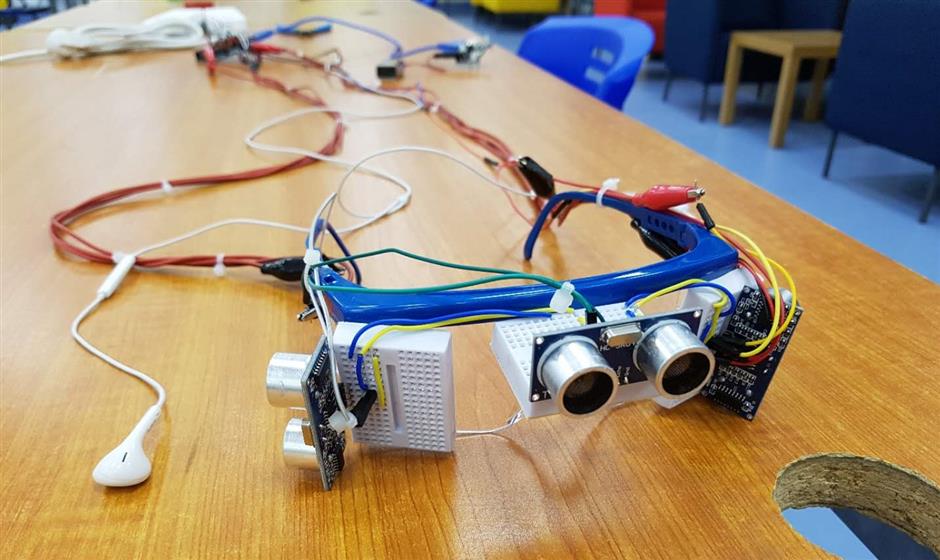

Cai Xianjue (second from left) is the man behind the eyeglasses with ultrasonic devices.
“We have different tones for the three directions ─ ‘Do’ for the left, ‘Mi’ for the front and ‘So’ for the right,” Cai said. “It sounds more like a car-reversing radar sensor with a more frequent sound.”
Cai had the idea when he was walking along the sidewalk and noticed that the markings for the visually impaired and their guide dogs were of limited help in avoiding obstacles.
It took Cai and three classmates just a month to put the idea into reality. The hardest parts were to find the proper materials and learn how to write code.
“It’s just an experiment so far, not a mature product,” he said. “It can be mass produced if we continue to improve and perfect the glasses.”
Chen Tianyu and his team invented a gadget that detects how fatigued the body is when people are working out.
The principle behind the device is to trace people’s fatigue by monitoring the muscles’ electronic signals to help improve exercise efficiency and avoid injuries.
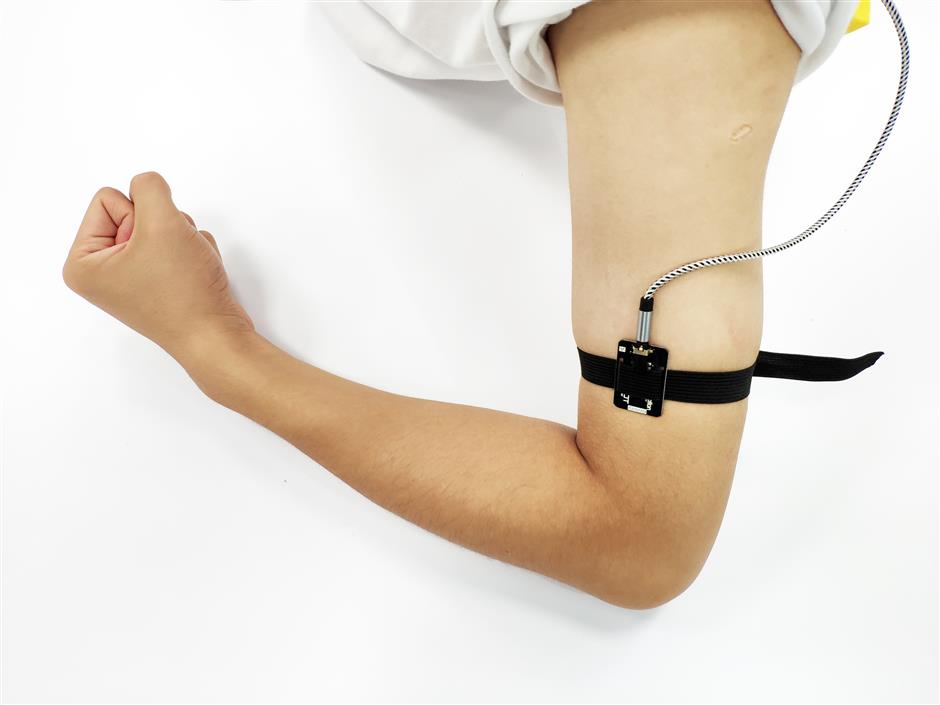
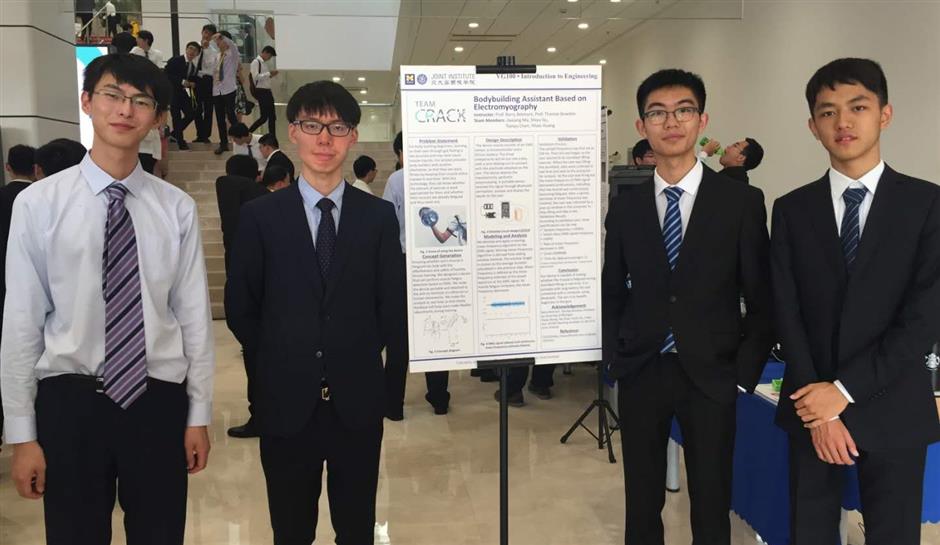
Chen Tianyu (second from right)
“It’s the same with the electrocardiogram, which senses your electrocardio signals, while our invention senses the arm muscles’ electronic signals,” Chen said.
The “fitness helper” is equipped with a computer app, which shows whether a muscle is stressed or properly exercised. A green line indicates everything is normal, and it turns yellow when the muscle is getting tired, while a red line tells you to stop and rest.
“The biggest problem for us is how to correctly analyze the body signals because the biological signals are often complicated, and it requires lots of calculations,” Chen said.
The students soaked themselves in a sea of professional papers and learned to write codes from zero.
The “customer experience,” Chen said, is better than doing the ECG, as the device can be easily wrapped around the arm, and the data is sent to the computer via a wireless connection.
“It’s still a long way to go before the invention can be turned into a real product,” he said. “What we can learn and how much experience we get from this project is much more important.”
Zhang Junjie and his team developed a “magic mirror,” where users can read news, receive messages, check e-mails and weather forecasts, check room temperatures and check their daily calendar, while brushing teeth and washing faces in the morning.
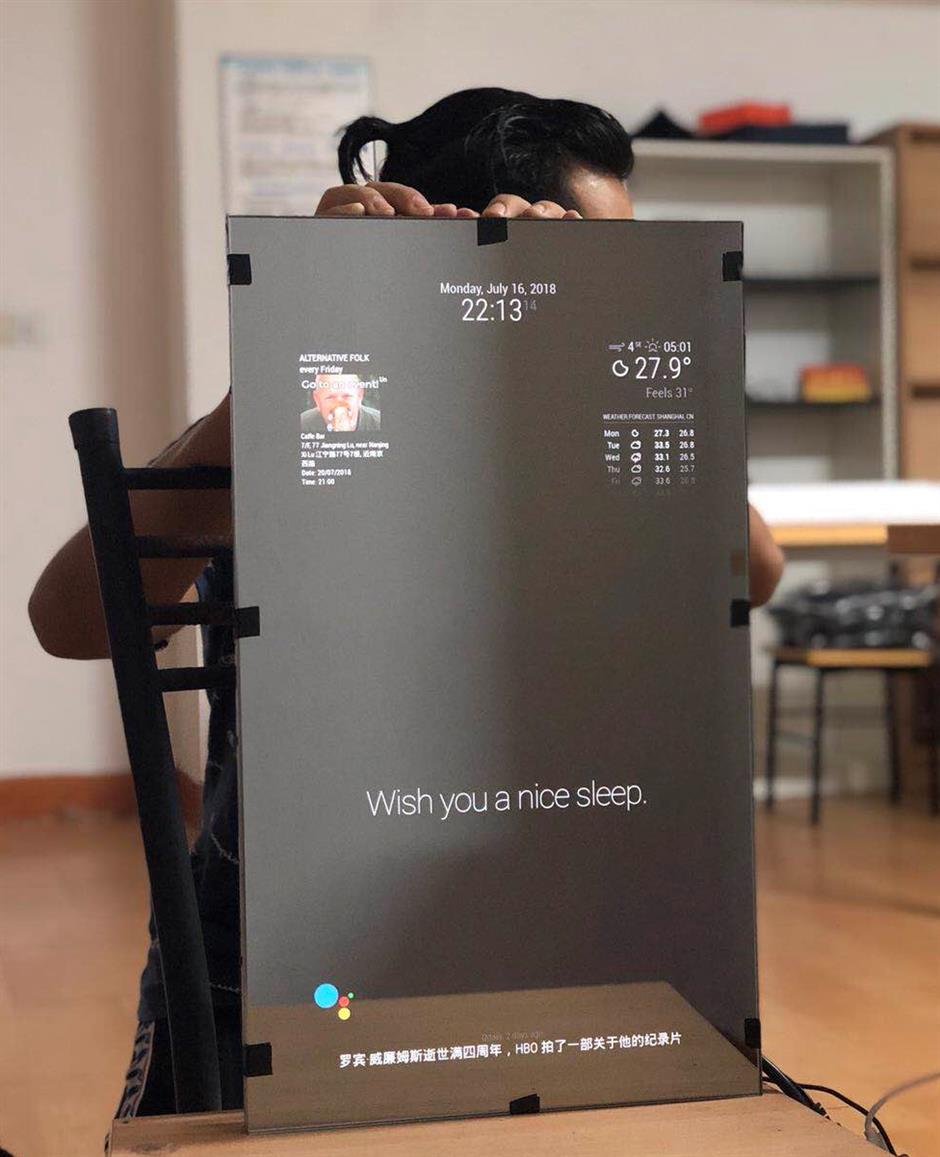
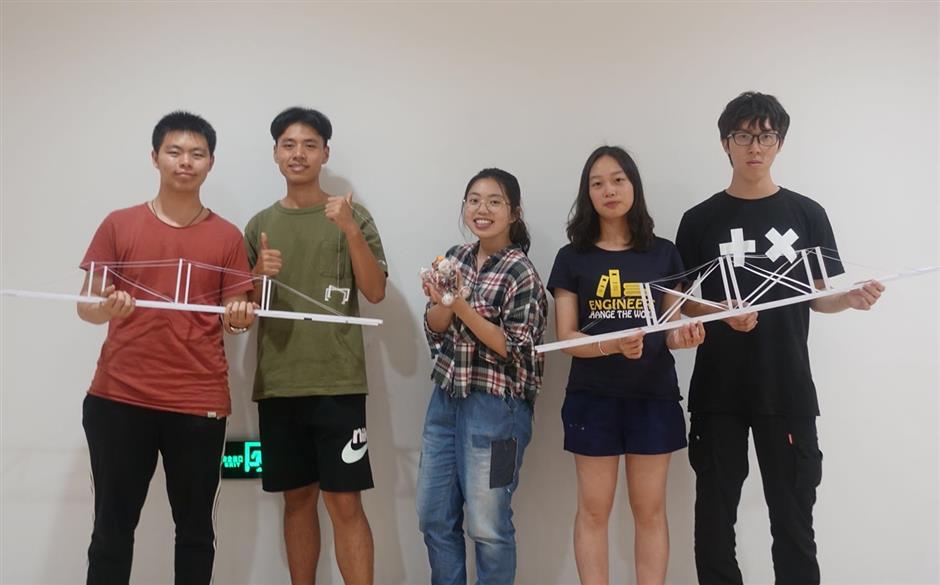
Zhang Junjie (second from left) and his team
“It’ll greatly improve work efficiency and facilitate our daily life,” Zhang said. “At the same time, it’s very cool and fancy.”
A double-sided mirror (one side reflecting light and the other pervious to light) is added to a screen. Computer programs are written, which can be shown on the screen. They also added a search engine and a facial recognition system for privacy protection.
The invention can also be linked with other smart furniture in the home to make orders or operate robot vacuum cleaners or air conditioners with further development.
“It’s not realistic to put this invention into mass production now because it’s still at an infant stage with some defects,” Zhang said. “But at least it shows a trend in future.”
Young people’s imagination is endless and often surprising, and what Shanghai is trying to do is to spark that imagination. In April, at the Shanghai International Technology Fair, a total of 22 inventions by young students took the stage, with two attracting investment.
The inventions included an artificial intelligence cup, a jacket that can take selfies, an auto-cleaning desk and a lamp that also functions as an air purifier.
“New problems will definitely follow in the process of turning the idea into reality and finally a product,” said Hong Yongqing, deputy director of the Shanghai Invention Association and a teacher at the Shanghai Youth Technological Innovation Center. “So young students must have the intellectual property awareness at the very beginning to make sure their ideas can be smoothly transformed to the actual product.”
















